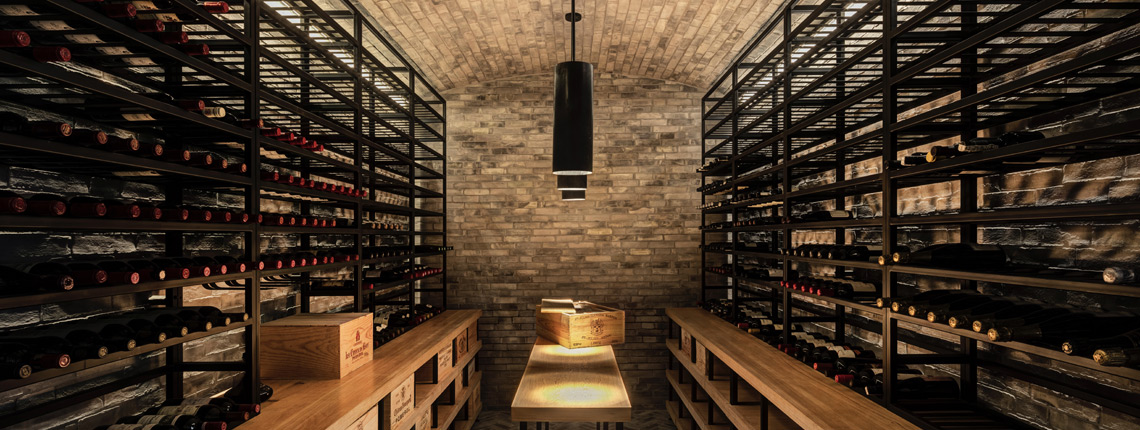

The price of prime property is sky rocketing. Savvy property owners are choosing to extend to increase the size of their homes, rather than moving. An increasing number of people are utilising the basements of their properties, or even digging down to maximise square footage. Read on to find out what key factors you should be thinking about when considering the design for your basement lighting.
Get in touch to find out how we can help you with your Basement Lighting needs
It is sensible to use as much natural light that is available, and incorporate this into the scheme. Our previous blog on natural light gives some good ideas, whether it be through sun pipes, walk on roof lights, light wells or skylights. The importance of natural light cannot be over emphasised, unless you are creating a specialist area like a cinema or wine cellar, which may actually benefit from no natural light.
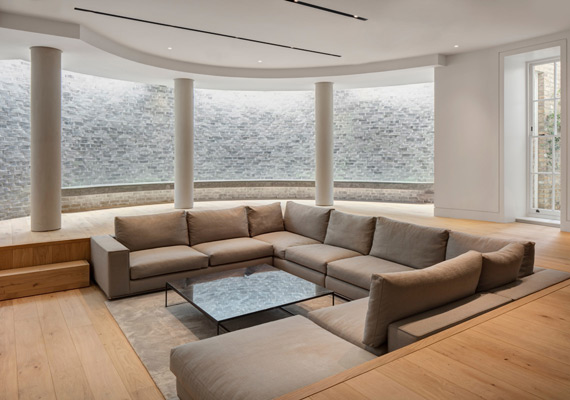
At Lighting Design Studio we can simulate day lighting with computer models. Renderings and mockups can help with visualisation, and the placement of skylights and windows. The images below show the use of skylights and a glazed door from a light well. The coloured image demonstrates the expected luminance achieved from daylight.
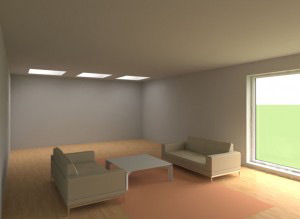
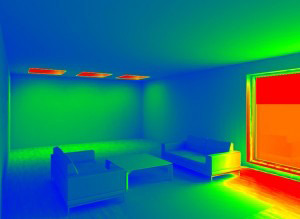
We can calculate other values such as daylight factor, and illuminance levels. Calculations can help build up a picture of daylight penetration, if any. If there is no possibility of getting natural light into the space, one solution is creating ‘fake’ skylights using artificial light to replicate the colour temperature (Kelvin) of natural light. Typically around 5000-6500k, it is also possible to use dynamic light that changes colour temperature throughout the day to replicate daylight more accurately. Alternatively Coelux produce an optical system based on nano technology to artificially reproduce daylight. Their groundbreaking design replicates the visual appearance of the sun and is truly impressive. You can find out more about colour temperature from here
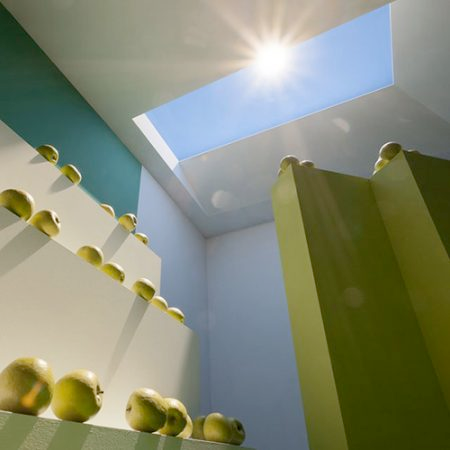
The colour of your room will also have a massive and important impact on the way light interacts with the space. Of course lighter colours reflect light further, so it really is worth considering the colour and finishes from the outset.
More often than not basements are multi function spaces. Relaxing, studying, entertaining, gym sessions, swimming pools, home cinemas, art galleries, wine cellars, in any combination are not uncommon. To accommodate the changing needs of a basement space, lighting clearly needs to be flexible. Adjustable fittings can help provide adaptability, and lighting track and spotlights can be a good solution, and so can 5 amp sockets for removable floor or table lamps. Most importantly using multiple lighting circuits is key. A lighting control system can really bring value to a basement space, giving the ability to recall light scenes at the touch of a button, and transforming a space by completely changing the dynamic and usability of the room with each personalised scene.
When relaxing and entertaining, dimmable lighting is important, with key features such as artwork highlighted. Coloured light, or colour changing light (RGB) can be a playful way of emphasising features in a basement space, this works particularly well for cinemas and gyms. Coloured light should always be used considerately and in moderation. An intuitive lighting control system is crucial when using coloured light.
Basements often have limited ceiling heights. To avoid that cavernous and oppressive feeling you can sometimes get, it is important to explore ways of getting light onto the ceiling. An obvious way is to use indirect wall lights, or wall sconces. Another approach is to use a coffer ceiling detail; which involves dropping the ceiling around the perimeter (allowing maximum ceiling height in the centre of the room) and hiding linear LED strip inside to wash out across the ceiling.
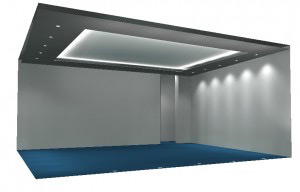
Care needs to be taken with the placement of LED strip to avoid heavy shadows and to ensure maximum projection across the ceiling. The LED strip should be dimmable and thought needs to be given to maximum runs of LEDs and placement of the remote LED drivers.
It’s often easy to forget we can’t see light. We see luminance, objects that reflect light. For a basement space to appear light and bright, surfaces, particularly walls, need to be washed with light. Some of the main options to consider are recessed ceiling downlights or dedicated wall washers, track and spots, floor-recessed uplights, or hidden LED strip in a shadow gap detail. There are calculations to be made and factors to consider before deciding on which method is best.
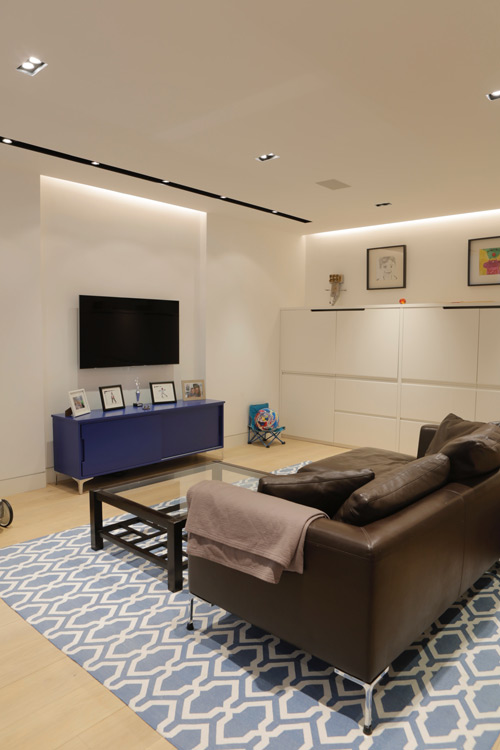
To summarise:
We have had a great deal of experience in lighting basements, from modest single storeys, to colossal triple level icebergs. If you are planning an excavation any time soon, get in touch, we would be happy to help.